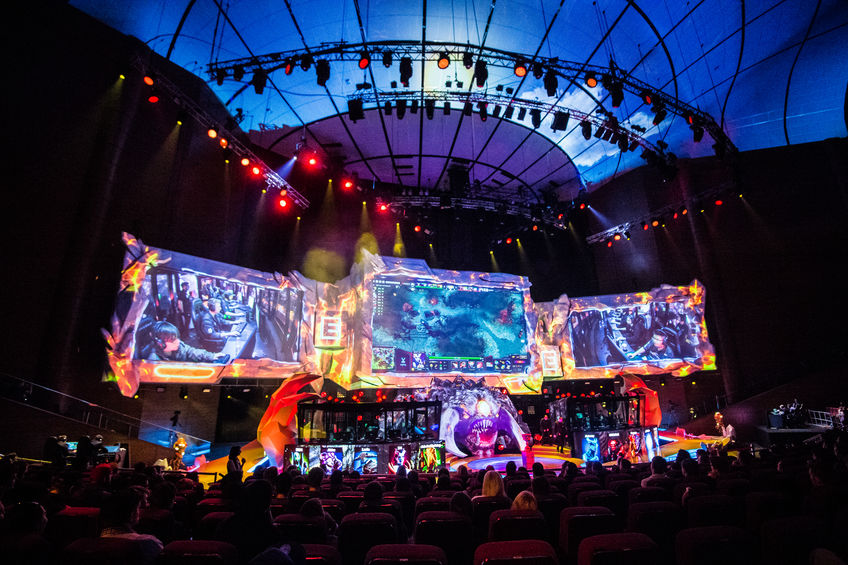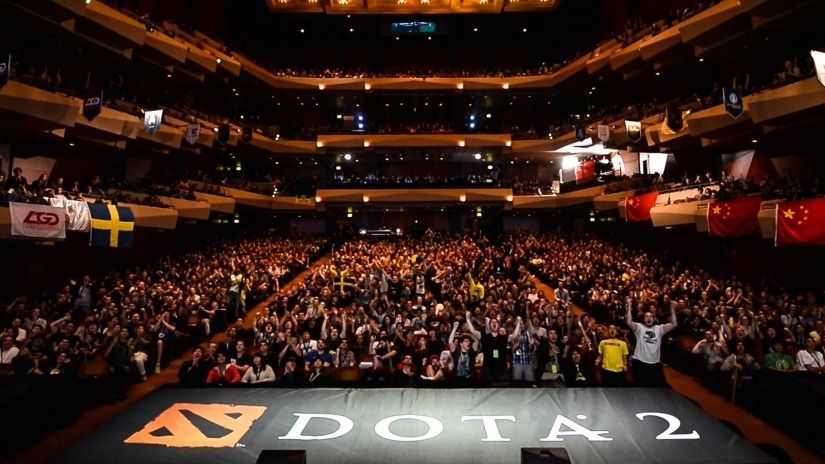A Complete Guide On DOTA 2 Tournaments
- Users' choice №1⭐️
- Extensive betting markets
- Competitive odds
- Variety of Bet Types
- A new bookmaker with fresh promotions
- Extensive markets & live betting
- Competitive odds & support
- User-friendly navigation
DOTA 2 players get to participate in many tournaments that hold annually. These tournaments offer incredible prize pools and take place within the DOTA Pro Circuit. In this article, you will know more about these tournaments and how you can participate in them.
What Are The Types Of DOTA 2 Tournaments?
There are different types of DOTA 2 events in the esports gaming world. Each of these tournaments has its distinguishing features. They include:
Online Tournaments
These tournaments do not need players to assemble at a specific place. They play the game online. Most online tournaments have a small prize pool, with an average price of less than $50,000.
LAN Tournaments
These are tournaments hosted on a local area network (LAN). These tournaments require the players participating to meet at a specific location. These LAN tournaments are usually held in big arenas or stadiums, with players sitting in special glass rooms while a big screen broadcasts the game to viewers.
The prize pool for LAN tournaments is usually above $50,000. These tournaments are also streamed online to allow viewers worldwide to watch their favorite teams compete.
The Qualifiers
Different teams compete against each other in the qualifiers for a chance to make it to a major or minor tournament. In these qualifiers, stronger teams advance to the tournaments, while the weaker teams drop out. The qualifiers also allow previously unknown teams to prove themselves as they attempt to defeat the better-known teams.
The qualifiers are divided into two stages. The first stage is the open regional qualifiers, where hundreds of participating teams from different regions in the world compete in. The teams who make it out of this phase advance to the next qualifying round called the closed qualifiers.
In the closed qualifiers, teams who emerged from the open qualifiers and those who received a direct invitation from the organizers compete for a chance to proceed to the main event. The only reward teams get from qualifiers is progression to the main event. They do not receive any cash prize.

Majors And Minors
After the qualifiers, teams gain entrance into Major and Minor tournaments. Valve partnered with third-party tournaments in 2017. The idea behind the partnership was to increase DOTA 2’s competitiveness and popularity. The collaboration led to a massive increase in the game’s popularity, leading to a high number of events.
For an event to be classified as a Minor or Major, it must be hosted using the LAN tournament format. Qualifiers are in every region, with an appropriate prize pool available for tournament winners.
The Minors are those with a prize pool ranging from $150,000 to about $300,000. If teams emerge victorious in Minors, they win not only the prize money but also earn DOTA Pro Circuit points. These points are required to make it to the biggest DOTA 2 tournament, “The International.”
The DOTA 2 Major tournaments are prestigious, with only “The International” ranking higher. They are well organized and attract millions of viewers from all over the world. The prize pool for Majors ranger from $1million to about $3 million. Winning teams from Major tournaments earn high DOTA 2 Pro Circuit points, which are very important to qualify for “The International.”
DOTA 2 Tournament Schedule And Format
All DOTA 2 tournaments have their respective formats. These formats are based on the type of tournament, the number of teams participating, and the reason for the tournament. The tournaments usually have the following kind of match schedules:
- Best of 1: Here, teams play just one game, which determines the match winner.
- Best of 3: Here, teams play three games. The team that wins two out of the three games wins the match.
- Best of 5: Here, teams play a maximum of five games. A team that wins three games wins the match.
DOTA 2 Tournament Group Stage
Most DOTA 2 events use a group stage format. After teams have qualified from the regional qualifiers, they are placed in different groups. In these groups, the teams play against each other using one of the following systems:
- The Swiss System
- The GSL System
- A round-robin system
If a team does well in the group stage, it advances to the next stage, called the playoffs.
The DOTA 2 Tournament Playoffs
In the playoffs, teams try to make it to a tournament’s latter stages and then to the final. The best teams usually make it to the playoffs. Hence, it is a very tough stage to navigate. In small tournaments, one bracket is used in the playoffs, meaning a team crashes out after a loss.
However, in some large tournaments, two brackets, upper and lower, are used. Teams that lose their matchups in the upper bracket move to the lower bracket. Another loss in the lower bracket and such teams crash out of the championship.
DOTA 2 Event Organizers
As earlier mentioned, Valve partnered with third-party tournaments to bring about a host of DOTA 2 championships. Some of these championships include:
The International
It is the most prestigious DOTA 2 championship in the world. Valve organizes “The International” annually, bringing the best 16 teams worldwide to compete for the massive grand prize. Each year, the event gets bigger. The International set the record of having the largest prize pool in esports tournament history in 2019 with a total prize of $34 million.
Qualifying for The International is easier said than done. Teams can advance by coming out tops in the regional qualifiers or receiving a direct invitation if they have high DOTA 2 Pro Circuit Points.
DOTA 2 Pro Circuit points is a rating system Valve introduced whereby teams earn points for winning championships. Twelve best-rated teams get invited for The International. Hence teams do all they can to win as many tournaments as they can to accumulate points.
The Electronic Super League
The ESL was founded in 1997 and remains one of the biggest leagues in the esports world. In 2013, the ESL began to organize the EMS One. It followed that up with a new series, ESL One, where Major and Minor tournaments are hosted. The ESL One has many viewers tuning in to watch their favorite DOTA 2 teams compete.
Mars DOTA 2 League
These DOTA 2 series are organized by the Shanghai-based company, Mars Media, and hosted mainly in mainland China. Mars media has also organized tournaments in France’s capital, Paris, making it gain more popularity.

DreamLeague
DreamHack began organizing the DreamLeague, which comprises Major and Minor events, in 2013. Most of the events in the series are hosted in Sweden.
Other DOTA 2 championship organizers include WePlay, The American Company, which organizes the DOTA Summit, and Predator Gaming, which organizes the Asia Pacific Predator League. Others include ONE Esports, which organizes the ONE Esports DOTA 2 World Pro Invitational, and Alisports, which organizes the WESG series.
The COVID-19 pandemic caused some of 2025’s scheduled events not to hold, though some of them held. One of the tournaments canceled due to the pandemic was the EPICENTER Major 2025, which was scheduled to hold from May 8-10. However, some of the upcoming DOTA 2 tournaments for the year include:
- Movistar Liga Pro Gaming Final, which will hold on November 24.
- ONE Esports DOTA 2 World Pro Invitational, which will hold in Jakarta from November 23-29
- Season 1 Major (new DPC system, regional leagues): Dec 7-Dec 19
- Fall Major Season 1, which will hold on December 12.
DOTA 2 Tournaments are a great spectacle for players, teams, and fans alike and make a great viewing experience for neutrals. If you are a DOTA 2 enthusiast, do not hesitate to cheer your favorite teams as they try to scale through their respective championships. Good luck to the respective teams as they battle for glory.
- Blog
- November 30, 2020 / Updated: 04 Aug 2021
